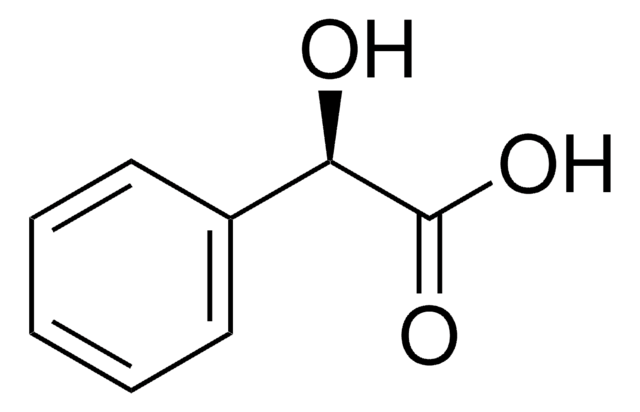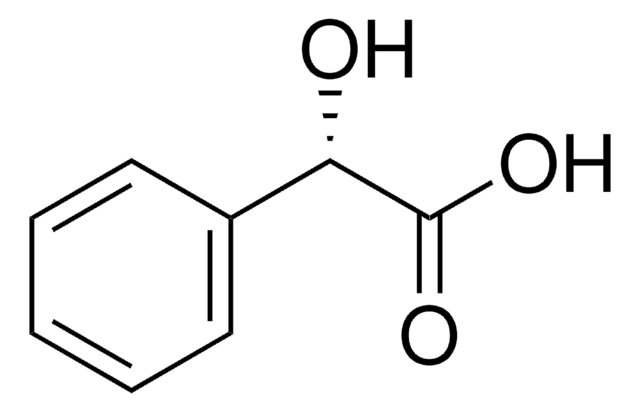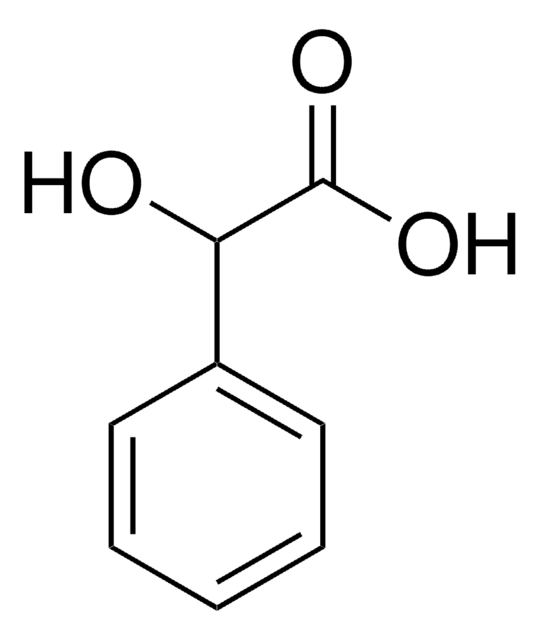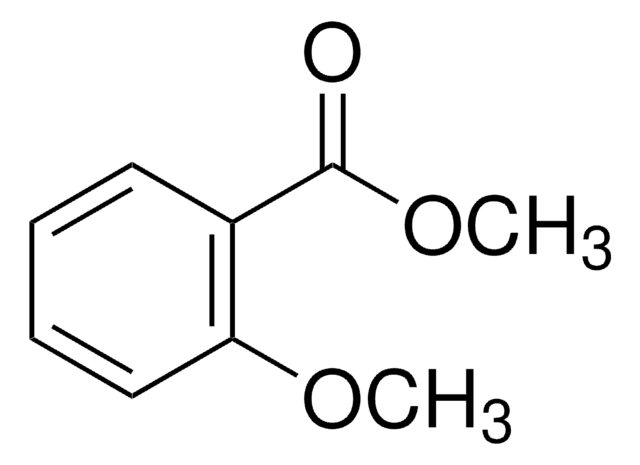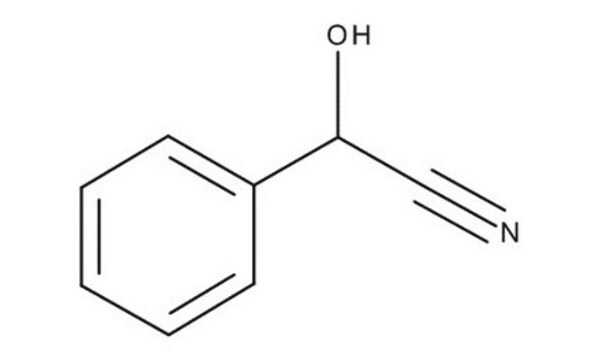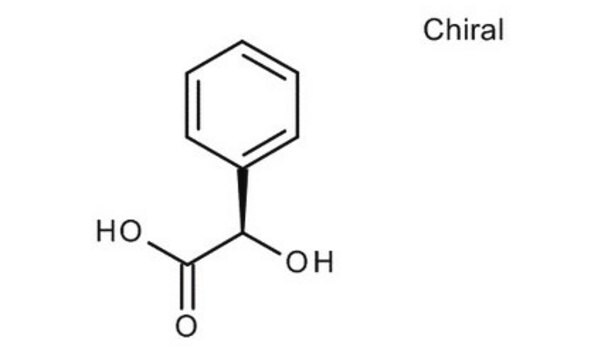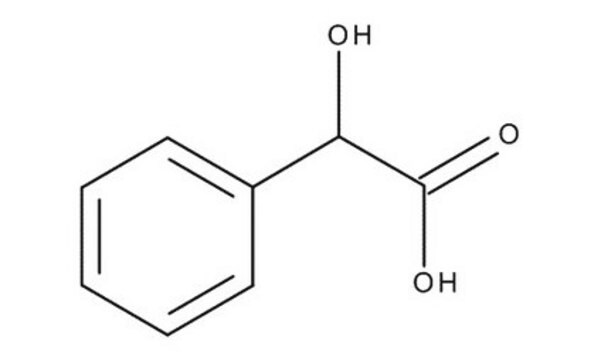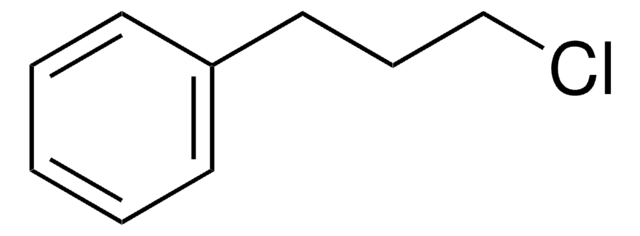727075
(R)-(−)-Mandelic acid
ChiPros®, produced by BASF, 99%
Synonym(s):
(R)-α-Hydroxyphenylacetic acid
About This Item
Recommended Products
grade
produced by BASF
Quality Level
assay
≥98.5%
99%
form
crystals
optical purity
enantiomeric excess: ≥98.5%
mp
131-133 °C (lit.)
functional group
carboxylic acid
hydroxyl
phenyl
SMILES string
O[C@@H](C(O)=O)c1ccccc1
InChI
1S/C8H8O3/c9-7(8(10)11)6-4-2-1-3-5-6/h1-5,7,9H,(H,10,11)/t7-/m1/s1
InChI key
IWYDHOAUDWTVEP-SSDOTTSWSA-N
Looking for similar products? Visit Product Comparison Guide
General description
Application
- As a chiral acid in the separation of diastereomeric salts for the synthesis of chiral pyridoindole based building block.
- In the study of chiral acid selectivity of poly(3,4-ethylenedioxythiophene) (PEDOT) based chiral conducting polymers.
Legal Information
signalword
Danger
hcodes
Hazard Classifications
Eye Dam. 1
Storage Class
11 - Combustible Solids
wgk_germany
WGK 1
flash_point_f
>374.0 °F
flash_point_c
> 190 °C
Choose from one of the most recent versions:
Certificates of Analysis (COA)
Don't see the Right Version?
If you require a particular version, you can look up a specific certificate by the Lot or Batch number.
Already Own This Product?
Find documentation for the products that you have recently purchased in the Document Library.
Our team of scientists has experience in all areas of research including Life Science, Material Science, Chemical Synthesis, Chromatography, Analytical and many others.
Contact Technical Service